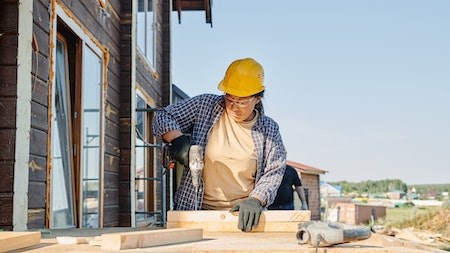January 2023 residential building statistics show that building plan growth is declining sharply as the effects of rising interest rates and recessionary economic conditions are being felt.
FNB's commercial property finance insights newsletter reports that January residential building statistics showed a sharp year-on-year decline in new planning activity. The StatsSA January 2023 release of residential building plans passed showed that the number of unit plans passed dropped by -65.38%, year-on-year, after a prior month's decline of -33.27%.
“After a mini-recovery following the 2020 Covid-19 lockdown, we had been expecting a slowdown in residential building activity due to interest rate hiking that commenced late in 2021,” says John Loos, Property Strategist at FNB Commercial Property Finance.
“Other exacerbating factors included a slowing economy impacted by rate hiking, load shedding and slowing global growth. This slowdown has lately been materialising. Residential building plans passed reached a post-lockdown high around mid-2022, after which the figures began to fall.
“More recently, residential building completions have also begun to decline - falling year on year by -30.06% for the three months to January 2023.”
Residential building plans passed
When breaking the number of unit plans passed up into the three building categories provided by StatsSA, it is evident that for the three months to January, the dwelling houses smaller than 80m2 category showed the fastest rate of decline - -59.2% year on year.
The second fastest rate of decline was the flats and townhouses category which slowed by -46.9% year on year. The slowest rate of year-on-year decline was the dwelling houses larger than 80m2 category at -16.2%.
Loos says the breakdown suggests that weakness is now more severe in the affordable housing segment than in the more affluent markets, with dwelling houses smaller than 80m2 in the affordable housing segment.
However, it is the other two segments combined - flats and townhouses and free-standing homes larger than 80m2 - that are typically more cyclical and actually say something about the business cycle of the country.
“So effective are these segments as leading business cycle indicators that the South African Reserve Bank includes them in its composite leading business cycle indicator. Growth in plans passed in these two segments combined - building plans passed excluding free-standing homes smaller than 80 m2 - has slowed by an extreme -67.78% year on year for January. These two segments also recorded a significant negative rate of -36.08% for the three months to January year on year, which is an accelerated rate of decline from prior months.
“This suggests that the more cyclical part of the residential building sector responded significantly to cyclical forces such as interest rate movements and recessionary economic conditions. The flats and townhouses category still looks set to remain the largest new building category by a significant margin in 2023, having increased its share of the market massively over the years from 26% in 2010 to 47% in 2022,” says Loos.
Outlook
FNB’s economic forecasts include a possible one further 25 basis point interest rate hike before rates start to move sideways for the rest of the year, along with a slower 0.4% GDP growth rate for 2023. This is significantly slower than the 2% recorded for 2022.
“Such an economic environment is expected to lead to a significantly slower residential building year in 2023 compared to 2022. Declining building plans passed in recent months point strongly in that weakening direction,” says Loos.
Writer: Sarah-Jane Meyer




